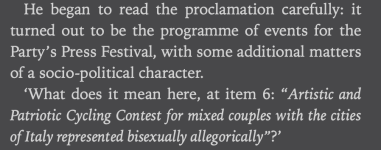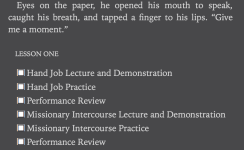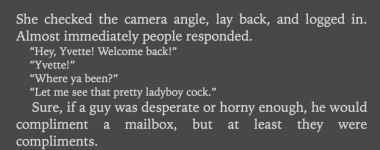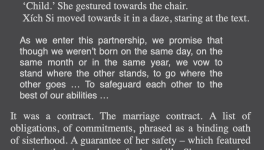CaliforniaPassion
Virgin
- Joined
- Nov 2, 2018
- Posts
- 3
What is the best way to denote a text exchange in a story? I would think quotation marks are meant for speech. It seems there should be a way of distinguishing a text. For one story I tried greater than-less than characters:
< outgoing text >
> incoming text <
I found out right away that these characters are used for formatting so I had to add the spaces. Anyone tried anything different? Any examples?
< outgoing text >
> incoming text <
I found out right away that these characters are used for formatting so I had to add the spaces. Anyone tried anything different? Any examples?







